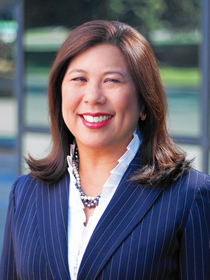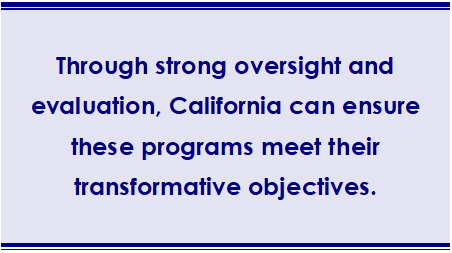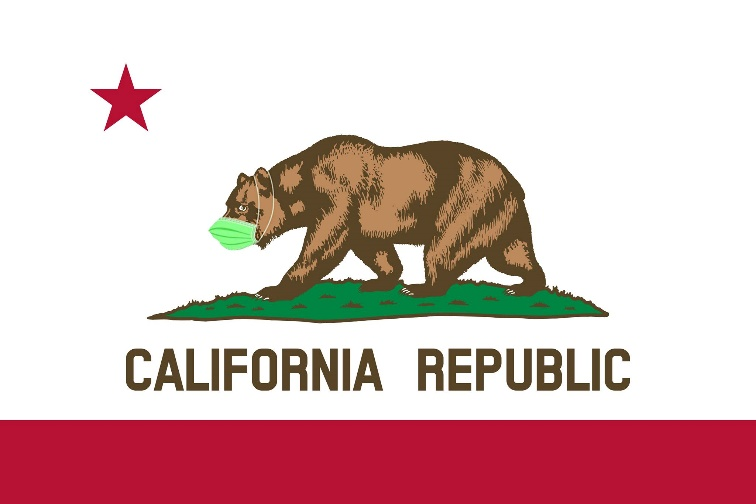You can also view this newsletter as a PDF.

Budget Deal Aims for Transformation in Recovery
On July 12, Governor Gavin Newsom signed Senate Bill 129, legislation that reflects the majority of the state budget agreement reached between the Administration and the Legislature. The agreement builds on priorities put forward in the State Assembly’s “A Budget of Opportunity” blueprint, the State Senate’s “Build Back Boldly” plan, and the governor’s May Revision.
The approved budget reflects a total spending plan of $262.6 billion for Fiscal Year 2021-22, of which $196.4 billion is from the General Fund. Total General Fund reserves equal a record $25.2 billion. Total Proposition 98 spending is at a historic high of $93.7 billion, including $66.4 billion from the General Fund.
Federal American Rescue Plan Funds
An important element of the new state budget is $27 billion in federal funding directed to the state from the American Rescue Plan, with specific requirements for how they can be spent. According the U.S. Department of the Treasury, the funds are available for the following purposes:
- Support urgent COVID-19 response efforts to continue to decrease spread of the virus and bring the pandemic under control
- Replace lost revenue for eligible state, local, territorial, and tribal governments to strengthen support for vital public services and help retain jobs
- Support immediate economic stabilization for households and businesses
- Address systemic public health and economic challenges that have contributed to the unequal impact of the pandemic
Fiscal Resiliency
The budget establishes the highest level of state reserves in history, totaling over $25 billion. These funds provide the state with a degree of fiscal resiliency necessary to address unforeseen fiscal emergencies.
Reserve funds are placed into four buckets, including:
Budget Stabilization Account — Based on Department of Finance (DOF) FY 2021-22 revenue estimates, the budget directs $3.4 billion to the Budget Stabilization Account, otherwise known as the rainy day fund. This takes the account’s balance to $15.8 billion, or about 9 percent of General Fund tax revenues.
Public School System Stabilization Account (PSSSA) — Proposition 2 established the PSSSA, also known as the “Proposition 98 Reserve.” The budget deposits $4.5 billion into this account.
Safety Net Reserve Fund — In 2018, the Legislature created the Safety Net Reserve Fund to protect health and human services programs during budget downturns. The budget makes a discretionary deposit of $450 million to this reserve in FY 2021-22, taking its total balance up to $900 million.
Special Fund for Economic Uncertainties (SFEU) — The budget maintains the state’s traditional reserve, the SFEU, at an estimated $4 billion in FY 2021-22 (more than two percent of General Fund revenues).
Conservative Revenue Estimate
The initial legislative version of the budget relied on the revenue estimates provided by the nonpartisan Legislative Analyst’s Office (LAO), which were approximately $7 billion higher than estimates from DOF. The governor insisted the budget agreement rely on the more conservative DOF estimate to be fiscally prudent. However, the budget agreement does recognize $1.6 billion of higher-than-expected revenues received in April and May 2021. With this budget structure, the state expects to remain well within its constitutional appropriations limit – known as the “Gann Limit” – in FY 2021-22.
 Key Budget Initiatives
Key Budget Initiatives
The approved budget includes several major new initiatives intended to address many of California’s most pressing issues, as Californians recover from the personal and financial impacts of the pandemic. Through strong oversight and evaluation, California can ensure these programs meet their transformative objectives.
Some of the major initiatives include:
$8.1 Billion for Golden State Stimulus 2 — Provides $8.1 billion in direct relief to Californians with adjusted gross income of up to $75,000. This provides Californians with payments of $500 to $1,100, depending on their income tax filing status.
Child Care Slots — Increases child care access by creating 200,000 new slots, with 120,000 to be added in FY 2021-22 and another 80,000 phased in over the next four years.
Universal Transitional Kindergarten — Adopts universal transitional kindergarten (TK) as part of a mixed delivery system, phasing in expanded age eligibility to full implementation in FY 2025-26. The agreement pledges ongoing funding of approximately $2.7 billion per year at full implementation.
Community Schools — Provides $3 billion in one-time Proposition 98 funds to launch a statewide initiative to build accessible community wellness and student health hubs on more than 1,000 school campuses.
Youth Behavioral Health — Invests $4.4 billion dollars over five years to create a new, modern, and innovative behavioral health system for youth ages 0 to 25.
Front-Line Anti-Poverty Programs — Includes more than $4 billion over two years for various anti-poverty programs administered by the Department of Social Services.
Medi-Cal at 50+ — Provides ongoing funding, growing to $1.3 billion, to expand Medi-Cal eligibility to all income-eligible Californians over age 50, regardless of immigration status.
Medi-Cal Asset Test Removal — Eliminates the Medi-Cal asset test, removing the “senior savings” penalty and expanding access to more income-eligible seniors.
Local Multi-Year Support for Local Governments — Includes $1 billion in support for local governments to address homelessness in FY 2021-22 and FY 2022-23.
Fine and Fee Reductions — Reduces the debt of low-income Californians by eliminating various criminal administrative fees, including civil assessments, subject to the enactment of legislation later this year.
Drought Package — Provides $3.2 billion to address the current and emerging effects of drought.
Climate Resiliency Package — Provides approximately $3.7 billion over three years to make needed climate resiliency investments.
Broadband — Appropriates $6 billion over a three-year period for broadband infrastructure and improved access to broadband services throughout the state.
Affordable Housing — Provides $1.75 billion to alleviate the backlog in affordable housing construction.
Workforce Development — Allocates over $1 billion for workforce development. Funds will provide training, education, and “upskilling” opportunities.
 Going Forward, Cautious Optimism…
Going Forward, Cautious Optimism…
There is reason to be optimistic about the direction of California’s post-pandemic recovery. According to the recently released UCLA Anderson School June forecast, the current rapid opening of the California economy and low infection rates (compared to the rest of the nation) indicate a faster recovery than previously forecast. Additionally, the forecast expects California to recover faster than the overall U.S. economy.
The UCLA forecast credits California’s more stringent use of non-pharmaceutical interventions — such as face mask mandates, business closures, and gathering restrictions — than elsewhere in the nation as a key factor in lower infection rates and a faster overall recovery.
…And Reason for Caution
While the recovery appears to be on the right track, as highlighted by optimistic LAO revenue assumptions and the UCLA forecast, there continue to be credible risks to the recovery and the budget.
Foremost among those risks is a resurgence of COVID-19 cases that could result in new or renewed public safety mandates. Another risk is the prospect of inflation, already a concern among many economists who question whether the current rate is transitory or more permanent. Prospective inflation also could spark a decline in the stock market that would have adverse impacts on California’s personal income tax and capital gains receipts. Along with these risks is the ongoing threat of natural disasters made more frequent and destructive due to the effects of climate change.
Activist Investors Reshape Corporate
Boards to Address Climate Risk
 After years of fruitless engagement on climate change disclosure and planning, activist investors launched a groundbreaking shareholder campaign and elected to the 12-member board of ExxonMobil three new board directors with climate change expertise. The California State Teachers’ Retirement System (CalSTRS) – on whose board Controller Yee serves – was the first institutional investor to voice support for the slate of four directors put forth by San Francisco-based activist investor Engine No. 1.
After years of fruitless engagement on climate change disclosure and planning, activist investors launched a groundbreaking shareholder campaign and elected to the 12-member board of ExxonMobil three new board directors with climate change expertise. The California State Teachers’ Retirement System (CalSTRS) – on whose board Controller Yee serves – was the first institutional investor to voice support for the slate of four directors put forth by San Francisco-based activist investor Engine No. 1.
On the heels of CalSTRS’ December endorsement, ExxonMobil released an improved carbon disclosure report, which included Scope 3 emissions. In January, the company added two new board members – one with climate expertise and one with energy sector expertise. They also launched new low-carbon products. However, these steps were not enough to dissuade shareholders from voting in the bloc of directors, who now control one-quarter of the ExxonMobil board and hold the power to reshape the company’s response to climate change and preserve sustainable long-term returns.
The ExxonMobil proxy fight marked the launch of CalSTRS’ activist stewardship strategy, which is targeted at a select group of companies that refuse to change their practices despite repeated investor engagement and advocacy. In addition to their early support of the Engine No. 1 slate, CalSTRS was instrumental in generating support from the California Public Employees’ Retirement System (CalPERS) and other large investors, as well as proxy advisory firms. CalPERS also worked to generate support from investors, including large asset management firms.
A lengthy process of engagement led up to this year’s historic proxy vote. In 2016, ExxonMobil was first identified as a systemically important emitter by the newly-formed Climate Action 100+ initiative, a partnership that grew to 575 investors with $54 trillion assets under management. The following year, CalPERS co-filed a climate risk resolution, which garnered 62 percent support and led to ExxonMobil publishing its first sustainability report. However, the report was not as robust as those provided by other oil and gas companies, leading CalPERS and CalSTRS to vote against the company's slate of directors in 2018. In 2020, CalPERS filed a Scope 3 emissions disclosure proposal, which was withdrawn after ExxonMobil released its report earlier this year.
In addition to the ExxonMobil vote, the 2021 corporate shareholder season has been a busy one for investors so far, with the nonprofit advocacy group As You Sow reporting 34 environmental, social, and government-related (ESG) shareholder proposals had been approved at 2021 shareholder meetings by late June, eclipsing the calendar year 2020 record of 21. Notably, the level of support grew, with 17 proposals receiving more than 70 percent of votes, compared to two last year. For the first time, corporate management joined investors in supporting some of the resolutions.
Proposals include:
Political Spending – The largest share of successful proxies targeted the way in which companies influence the political system, with 80.6 percent of Netflix shareholders and 80.1 percent of Chemed shareholders seeking more election spending oversight and disclosure. The Norfolk Southern proposal asking for a report about climate change lobbying and advocacy, both directly and indirectly through trade associations, won with 76.4 percent of the vote.
Climate and Environment – Eight climate change proposals were approved, with management support for some including Bunge (98 percent) calling for reporting on supply chain deforestation impacts and General Electric (98 percent) for net-zero greenhouse gas (GHG) goals. Others supported GHG emissions targets at Phillips 66 (80.3 percent) and Chevron (60.7 percent).
Diversity – The effectiveness of diversity, equity, and inclusion programs was the focus of a successful resolution at IBM (94.3 percent), while a proposal on executive diversity passed at Paycom Software (93.7 percent), as did disclosure of diversity program data at Union Pacific (81.4 percent). Two first-year proposals calling for racial justice audits fell just short of passage at Amazon (44.2 percent) and JP Morgan Chase (40.5 percent).
Increased investor support for ESG-related corporate change is in line with the priorities of federal financial regulators. In June, Securities and Exchange Commission (SEC) Chair Gary Gensler released an updated rulemaking plan, which placed climate change risk, board diversity, and human capital management at the top of the list. He called for corporate disclosure requirements to be released in October, with final rules expected in 2022.
Both CalPERS and CalSTRS have met with SEC staff and submitted detailed comments to SEC, stressing the critical need for investors to be able to accurately assess risks and make prudent investment decisions.
A noteworthy European legal case has heightened awareness of corporate responsibility with regard to climate change, and may spark accelerated progress on this front. In a first-of-its-kind ruling, a Dutch court ruled in May that Royal Dutch Shell is partially responsible for climate change and ordered the company to reduce its carbon emissions. Royal Dutch Shell has publicly stated it will accelerate its plans to cut emissions to meet the ruling, which requires the company to cut carbon emissions 45 percent from 2019 levels by the year 2030.